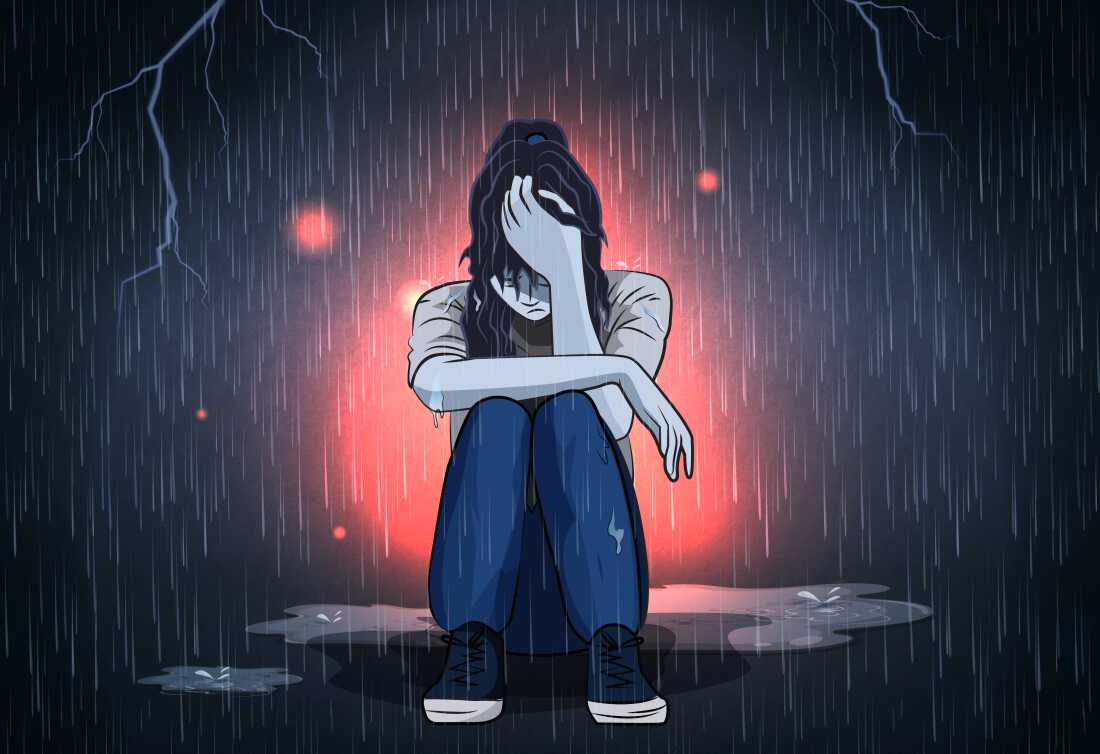
The examine checked out data for greater than 250,000 emergency division visits by youngsters who’re on Medicaid.
Cemile Bingol/Getty Photos
disguise caption
toggle caption
Cemile Bingol/Getty Photos
Youngsters who go to emergency departments in a psychological well being disaster and must be hospitalized typically find yourself caught there for days, a brand new examine finds. That occurs in roughly one in ten of all psychological well being emergency visits for kids enrolled in Medicaid throughout the nation.
The commonest psychological well being crises that led to such prolonged stays, or boarding, have been depressive issues and suicidal ideas and makes an attempt, in keeping with the examine revealed in JAMA Well being Discussion board.
“So a baby reveals up at an emergency division with a psychological well being situation, [and] about one in ten instances, they’re staying for 3 days or longer,” says lead examine writer John McConnell, director of the Middle for Well being Techniques Effectiveness at Oregon Well being and Science College.
McConnell and his colleagues additionally discovered that in a handful of states, together with North Carolina, Florida and Maine, as many as 25% of psychological well being visits led to youngsters boarding on the emergency division for 3-7 days.
The findings aren’t shocking, says Dr. Jennifer Havens, chair of the division of Youngster and Adolescent Psychiatry on the NYU Grossman College of Drugs.
“However having knowledge like this is essential to see the impact throughout the nation,” she provides. Havens was not concerned within the examine.
Boarding within the emergency division has been a rising subject throughout the nation for many years, however the rise has been significantly dramatic lately for pediatric psychological well being instances.
“As the kids’s behavioral well being disaster nationwide has elevated, states haven’t been in a position to sustain with behavioral well being methods,” says Dr. Rebecca Marshall, an affiliate professor of kid and adolescent psychiatry at OHSU, who additionally wasn’t concerned within the new examine.
Although the examine appeared solely at Medicaid claims, the issue occurs for kids on personal medical health insurance, as nicely.
“We actually have struggled to construct capability over time to extend the variety of inpatient beds,” she says. “And so typically what occurs is youngsters will come into the hospital, they want an inpatient psychiatric mattress and there is not one out there. So then they wait till a baby in one of many psychiatric items discharges and a mattress turns into out there.”
Many states have a surprisingly low variety of psychiatric beds for teenagers, says Marshall. For instance, Oregon has solely 38 beds for highest want pediatric psychiatric instances. “After which we now have lower than 200 residential beds, and that is a decrease acuity therapy program that tends to be long run.”
“There’s an unlimited drawback throughout the nation with a scarcity of entry to psychological well being providers, each on the [inpatient and] outpatient aspect,” says Havens. Sufficient outpatient providers can stop youngsters with psychological well being situations from reaching a disaster level.
With out satisfactory outpatient and inpatient psychological well being care choices, households usually tend to take their little one to an ER if the kid is in a psychological well being disaster.
However “what they discover after they go to the emergency division is that there typically is not any out there care,” says Marshall. “There’s nothing instant.”
Most ERs do not also have a little one and adolescent psychiatrist, says Havens, “as a result of we have simply by no means invested within the assets to have this type of service for teenagers.”
And when youngsters in psychological well being crises find yourself caught in ERs for days, their signs can worsen even when there is a psychiatrist on employees.
Most of those youngsters boarding in an ER find yourself caught in “one small room,” says Marshall, generally a windowless room. “They are not in a position to go away the room. They cannot train. They are not in a position to work together with different youngsters, which is a very vital a part of growth. And sometimes there are usually not any form of extra therapeutic actions that you’d discover in an inpatient unit.”
“I am unsure what the fitting phrases are, however, [it’s] actually difficult, heartbreaking scenario for households which have a baby and so they’re attempting to form of discover a place to stabilize them, and so they’re caught within the emergency division,” says McConnell.




